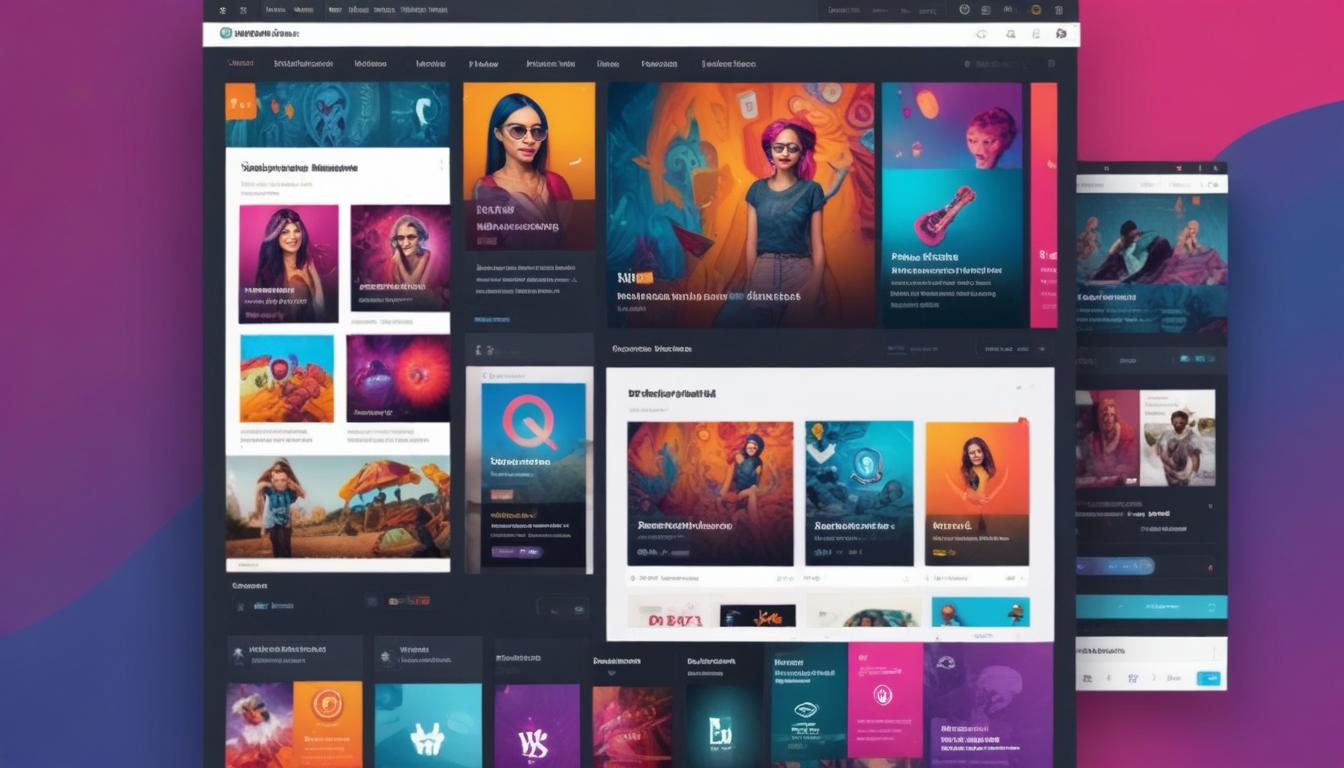
- improve page load speed
- enhance content readability
- optimize for mobile devices
- integrate multimedia elements
- utilize internal linking strategies
Page load speed is a critical factor in enhancing user engagement and reducing the bounce rate on your WordPress blog. When your site loads quickly, it not only improves the user experience but also boosts your overall traffic and search engine rankings, factors that significantly contribute to better WordPress performance. Fast-loading websites tend to rank higher in search engine results pages (SERPs), improving visibility and attracting more visitors.
Several strategies can help you improve the page load speed of your WordPress blog. Firstly, optimize your images, as these often take up the most significant portion of website bandwidth. Using compression tools or plugins like Smush or ShortPixel can drastically reduce the file size without losing quality. It’s also wise to choose the right image format; for instance, using JPEGs for photographs and PNGs for simpler graphics may speed up load times.
Another effective approach is leveraging browser caching to store some of your website’s components on a visitor’s local drive. This reduces the number of requests made to your server, speeding up the site for returning visitors. You can use caching plugins such as W3 Total Cache or WP Super Cache to handle this effortlessly.
Minifying CSS, JavaScript, and HTML files can also improve load speed. By compressing these files, you remove unnecessary characters, leading to quicker downloads. Plugins like Autoptimize can automatically perform this task, making your website leaner and faster.
Choosing a reliable hosting provider is crucial. A good host provides better infrastructure for faster response times. Managed WordPress hosting services like SiteGround or WP Engine are optimized for such purposes. Additionally, you can further enhance speed by utilizing a content delivery network (CDN) like Cloudflare, which serves your site’s data across multiple servers worldwide for quicker access.
Regularly updating your WordPress core, themes, and plugins ensures that your blog is running on the latest technology, often equipped with improvements to speed and security. Monitoring the site’s performance using tools like Google PageSpeed Insights or GTmetrix can be very beneficial. They provide actionable insights into any speed-related issues your site might be facing and offer tips to resolve them.
A unique advantage of accessing tools and plugins through platforms like WorldPressIT.com is the ability to explore over 8,000 premium plugins and themes at significantly reduced prices, courtesy of the special GPL licensing. This access can empower you to equip your WordPress blog with the fastest available resources, boosting performance without overwhelming your budget.
enhance content readability
Enhancing your content’s readability is pivotal in reducing bounce rates and improving user engagement on your WordPress blog. When visitors land on your blog, they are more likely to stay and explore if they can easily consume the content. Organizing the content in a clear and structured manner boosts WordPress performance by making your site more appealing and accessible.
Start by focusing on your content structure. Use short paragraphs, and break up content with subheadings to guide readers through the information effectively. A clear hierarchy helps readers scan the material quickly, catering to various reading habits.
Incorporate bullet points or numbered lists where appropriate, as they make information easy to digest. Highlighting key terms with tags can also draw attention to important points and facilitate skimming.
Utilize a legible, web-friendly font, like Poppins, to ensure readability. Proper font size and line spacing play an essential role in avoiding strain for your readers’ eyes. Keeping paragraphs centered and text color in black maintains a professional appearance, crucial for keeping more visitors engaged.
Maintaining a conversational but informative tone helps establish a connection with your audience. Avoid jargon unless necessary, and always explain any complex terms. It’s also beneficial to ensure that your language aligns with the knowledge level of your audience, whether they are beginners or advanced WordPress users.
Multimedia elements can act as a supplement to your text, providing visual breaks and keeping the readers interested. Appropriate images, infographics, and videos should support the written content, not replace it.
Regularly update your content to keep it fresh and relevant. This practice signals to your audience that your blog is alive and thriving, which can decrease the bounce rate significantly. Tools like Grammarly or Hemingway can help refine your writing, ensuring that your content is clear and error-free.
WordPress’s vast repository of plugins includes tools like WP Rocket and Yoast SEO, which offer readability analysis features, assessing your content structure and suggesting improvements. An advantage of utilizing platforms like WorldPressIT.com is the affordable access to these advanced premium plugins. With over 8,000 plugins and themes available, you can enhance your blog’s readability and overall performance without straining your budget.
optimize for mobile devices
Optimizing for mobile devices is crucial in lowering your blog’s bounce rate and bolstering user engagement. With a significant portion of web traffic coming from mobile users, ensuring that your WordPress blog offers a seamless mobile experience is non-negotiable. Mobile optimization not only enhances WordPress performance, but also ensures your content reaches and retains a wider audience.
Begin by selecting a mobile-responsive WordPress theme. These themes automatically adjust your layout to suit different screen sizes and resolutions, providing a pleasant experience whether users visit your site on a smartphone, tablet, or desktop. Premium themes available through WorldPressIT.com offer numerous mobile-responsive options at affordable prices due to special GPL licensing, allowing you to enhance your site’s performance without breaking the bank.
Incorporate AMP (Accelerated Mobile Pages) technology to make your mobile pages load even faster. Google’s AMP plugin for WordPress is a great tool to streamline content, ensuring it loads quickly and efficiently on all mobile devices. Fast-loading content reduces bounce rates by making mobile users more likely to engage with your content and explore further.
Ensure that all text and multimedia elements, such as images and videos, are appropriately optimized for mobile. Use responsive image techniques, which adjust image size according to the device accessing it. Additionally, make use of lazy loading plugins to defer loading of off-screen images and videos, enhancing load speed and user experience significantly.
Streamline your navigation for mobile users. Collapsible or “hamburger” menus, sticky navigation bars, and clear call-to-action buttons help users navigate easily on smaller screens. Maintaining intuitive and accessible navigation can transform the user’s journey, reducing frustration and bounce rates.
Consistent testing of your site’s mobile performance is essential. Use Google’s Mobile-Friendly Test Tool to check how well your site adapts to mobile devices and diagnose any problems that may hinder your mobile optimization efforts. This vigilance is central to maintaining a high-performing and user-friendly site.
Moreover, consider implementing mobile-specific plugins that enhance mobile experience, such as WPtouch, which tailors the mobile version of your site without altering your desktop design. With access to over 8,000 plugins on WorldPressIT.com, you have the tools to refine your mobile interface strategically and cost-effectively.
integrate multimedia elements

Integrating multimedia elements can be a powerful strategy for reducing bounce rates and enhancing user engagement on your WordPress blog. Multimedia content, such as videos, images, infographics, and audio clips, can break the monotony of text and offer your audience a dynamic way to consume information. When used effectively, these elements can greatly improve the WordPress performance by making your blog more engaging and interactive, encouraging visitors to spend more time exploring your site.
To successfully integrate multimedia, start by selecting content that complements and enriches your textual content. Ensuring that images and videos are relevant and add value to the topic at hand is important. High-quality visuals can enhance understanding and retention of information, making your blog posts more effective and memorable. Infographics, for example, can simplify complex data, making it more digestible.
Utilize the Gutenberg editor in WordPress, which provides blocks specifically for multimedia content, making it easy to add and arrange elements like images, videos, galleries, and more. This tool facilitates a seamless integration process, ensuring that multimedia components are displayed optimally across devices.
Streamlining your media files is crucial for load speed. Use plugins like Smush or Lazy Load to optimize images, ensuring they don’t slow down your site. The same goes for videos—embedding them from platforms like YouTube or Vimeo can save bandwidth and improve loading times.
Engage your audience by embedding multimedia that encourages interaction, such as comment-invoking videos or audio clips with discussion prompts. This can foster community interaction and drive repeated visits, lowering bounce rates and increasing user engagement.
Consider using galleries and sliders to showcase multiple images without overwhelming your layout. Plugins like MetaSlider or Smart Slider 3 available through WorldPressIT.com can offer advanced functionality, and due to GPL licensing, you can access them at affordable prices, helping maintain your site’s budgetary needs.
Ensure accessibility by providing captions for images and transcripts for videos and audio files. This not only aids users with disabilities but also improves your search engine optimization (SEO), as search engines can’t effectively index video and image content.
Regularly update and audit your multimedia content to ensure it remains relevant and functional. Broken or outdated multimedia elements can frustrate users and negatively impact WordPress performance, so ensuring smooth operation is essential for maintaining a professional and engaging blog.
Platforms like WorldPressIT.com offer access to a vast array of premium multimedia plugins and themes, allowing you to experiment with various styles and functions at a fraction of the cost. With over 8,000 options, you can refine your multimedia strategy easily and effectively, enhancing your blog’s appeal while keeping bounce rates low.
utilize internal linking strategies
Internal linking is an essential strategy to improve user engagement and lower bounce rates on your WordPress blog. By strategically placing internal links, you guide visitors to additional relevant content, keeping them engaged and increasing the time spent on your site. This method not only enhances WordPress performance but also strengthens SEO by helping search engines crawl your site more effectively.
To implement effective internal linking, start by conducting a content audit. Identify high-quality posts that are relevant and valuable, and consider linking them from your new or popular content. This method prioritizes valuable pathways for your audience, encouraging seamless navigation through your site.
Use descriptive anchor text that provides a clear indication of the linked content’s value. This helps both users and search engines understand the context of the link, promoting higher click-through rates and better SEO results.
Organize a logical site structure, where categories and tags clearly define content topics. Structure them in a way that naturally leads users to explore related posts. This approach not only aids user experience but also optimizes your site hierarchy, improving crawlability for search engines.
Incorporate links in contextual places, particularly where they add value to the content. For example, if a post mentions a specific topic or term that you’ve covered extensively elsewhere, linking to that resource can provide readers with more depth and insight, satisfying user curiosity and lowering bounce rates.
Leverage WordPress plugins, such as Link Whisper or Yoast SEO, which assist in internal linking by suggesting relevant posts based on your content. WorldPressIT.com offers access to these premium plugins at considerably reduced costs through special GPL licensing. This access allows you to optimize your internal linking strategy without significant financial investment.
Regularly review and update links to prevent broken or outdated paths, which can frustrate users and negatively impact WordPress performance. Tools like Broken Link Checker can automatically detect and alert you of any issues, ensuring a smooth user journey throughout your blog.
Additionally, consider implementing breadcrumbs navigation. Breadcrumbs provide a secondary navigation scheme that helps users understand their location within your site and can significantly improve their navigation experience.
With platforms like WorldPressIT.com, you can explore a diverse range of plugins and themes that streamline the internal linking process and ensure optimal user engagement. Availability of over 8,000 options ensures you have the tools required to refine your strategy affordably, contributing to an enhanced layout and better-performing WordPress blog.






Leave a Reply